Tom's Guide Verdict
With four days of battery life, an attractive design, great fitness features — and did we mention the battery life? — the Samsung Galaxy Watch is a step forward for smartwatches.
Pros
- +
Stylish design
- +
Long battery life
- +
Good fitness features
- +
Built-in music storage
Cons
- -
Few apps for Tizen
- -
Bixby far less capable than Google Assistant
Why you can trust Tom's Guide
When the Samsung Galaxy Watch first came out, it proved there's a real place in the world for smartwatches. As phones get bigger, it's increasingly handy to be able to simply glance at your wrist and find the time, who's calling or texting, the weather, and more.
But one thing that kept me from buying a smartwatch: battery life, or, more precisely, the lack thereof. Even now, a few years after I conducted this Samsung Galaxy Watch review, the best smartwatches will last two days at the most.
The Samsung Galaxy Watch doubled that meager endurance, which is one of the reasons it became the best watch for Android smartphone owners.
Editor's note: The Samsung Galaxy Watch and its successors, the Active 2 and the Samsung Galaxy Watch 3, are being replaced with the Samsung Galaxy Watch 4 and Samsung Galaxy Watch 4 Classic, which has a refreshed design, a 3-in-1 health sensor for measuring heart rate, taking ECGs and reading body composition, and a new WearOS operating system.
None of the older models will not get the merged software, but if you're interested in a refurbished model, or have some questions about the features of your existing smartwatch, read the Samsung Galaxy Watch review below.
Samsung Galaxy Watch: Price and availability
Samsung offers the Galaxy Watch in two sizes and three colors. The smaller, 42mm model comes in either all black or rose gold, while the 46mm model comes only with a silver case and black bezel and strap.
If you opt for the Bluetooth version of the 42mm model, it'll cost you $329; an LTE version through T-Mobile is $379. Similarly, the 46mm Bluetooth model is $349, while the LTE version (also through T-Mobile) is $399.
Samsung Galaxy Watch: Design
There's a built-in tension with smartwatch design: They need a display large enough to show information from apps and the like, yet can't be so big that they look outrageous on smaller wrists.
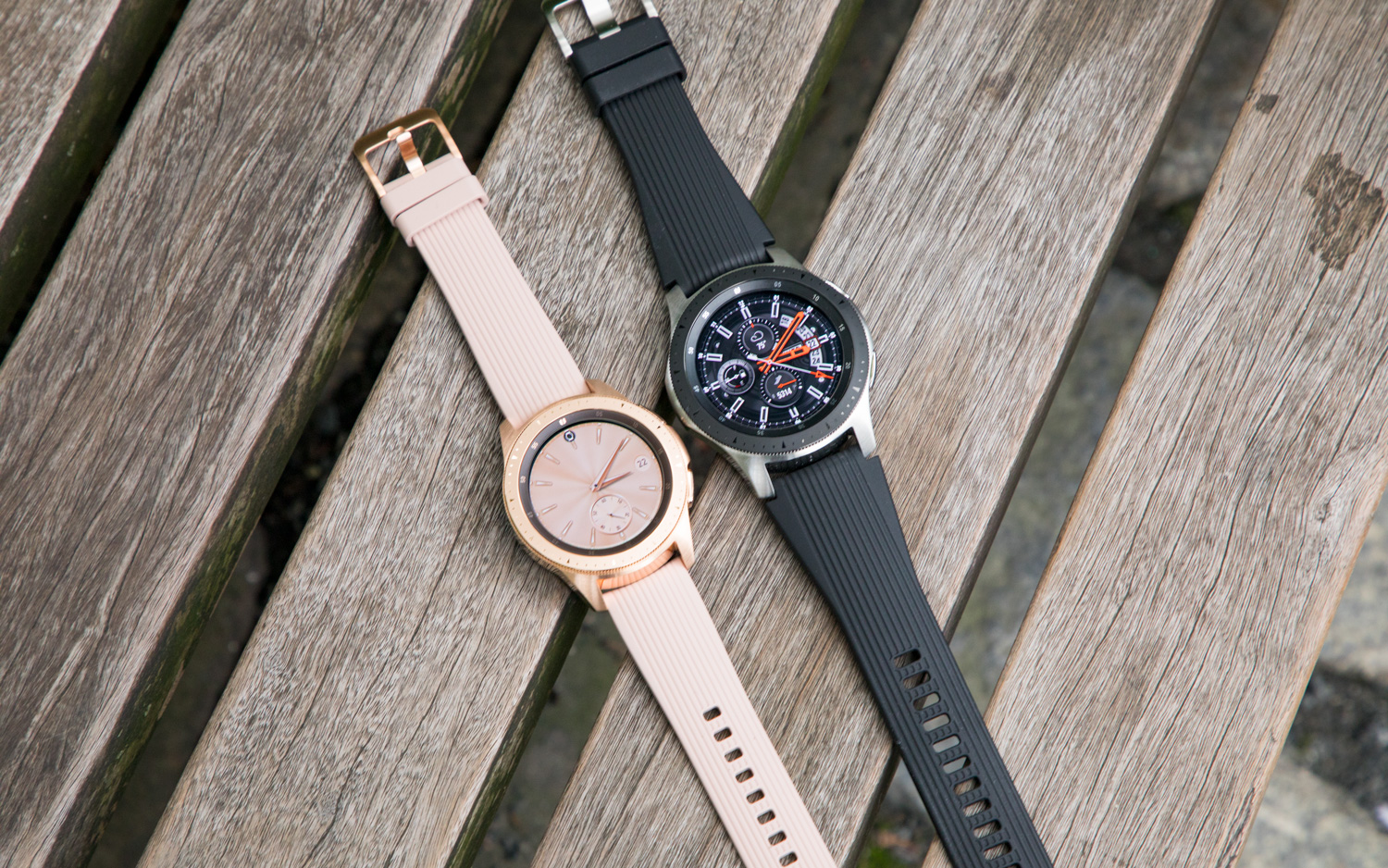
We tried out both the 42mm and 46mm Galaxy Watch. My colleague Caitlin found the smaller of the two watches a little large and heavy (1.73 ounces) for her tastes. I tried the larger model, which fit my wrist nicely. However, it's an even heftier 2.22 ounces. By comparison, the Garmin Forerunner 235 weighs 1.6 ounces, but that watch has an all-plastic design
But we both loved the way the Galaxy Watches looked, despite their bulk. The rose-gold model is a true rose gold, as opposed to the pink that other manufacturers have tried to pass off as rose gold. (Caitlin's rose-gold Apple Watch Series 2 is pink; there's no getting around it.) And the circular case is rounder than those of past Samsung watches, including last year's Gear Sport, which sported a squared-off case despite its round face.
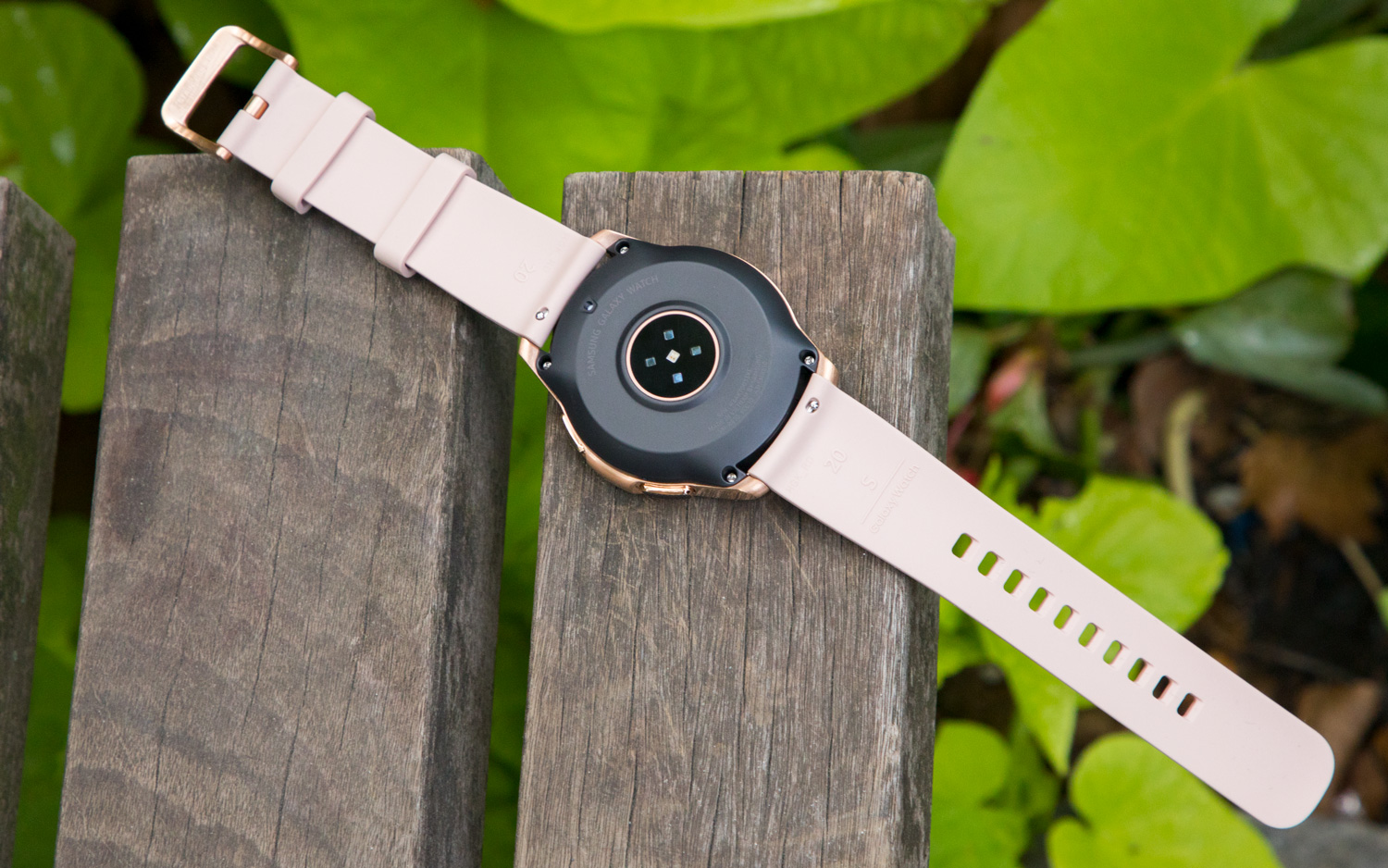
The 46mm model of the Galaxy Watch has a silver case and a black bezel; the buttons on the right side are also topped with black rubber with a raised pattern, giving them a nice tactile feel.
While Samsung offers only the silver option for the 46mm model, the 42mm watch is available in rose gold or black.
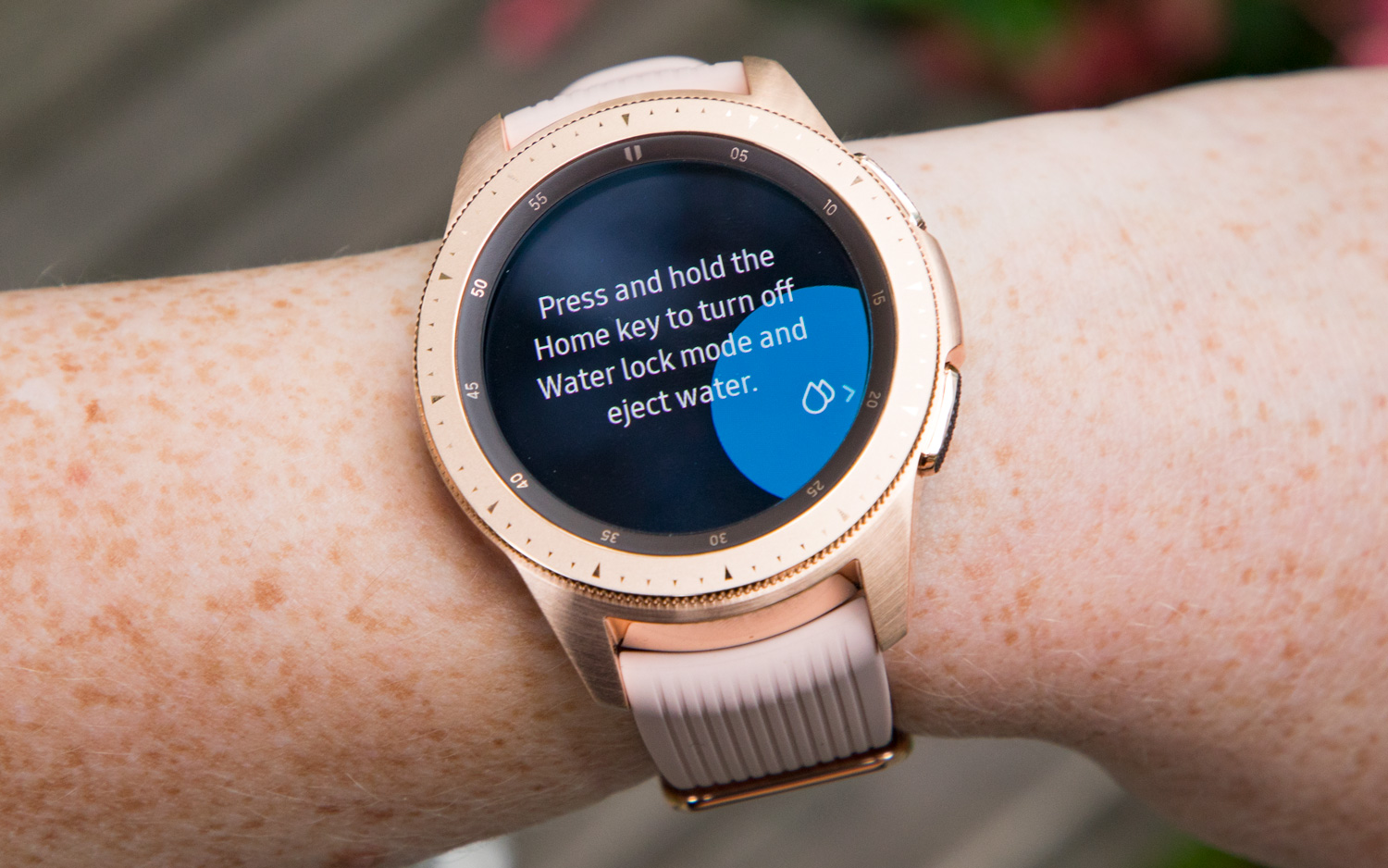
Samsung advertises the new Galaxy Watch as being tougher than previous models; its screen is protected by Gorilla Glass DX+, and it's dust- and water-resistant to 165 feet. There's even an Eject Water function that forces liquid out of the watch by blasting its speaker..
Samsung Galaxy Watch: Interface and Tizen OS
For better and worse, Samsung is sticking with its Tizen operating system. Organizationally, this OS is far better than Google's Wear OS and, to some extent, Apple's Watch OS. Screens are logically laid out and can be easily reordered and customized with a few presses and taps on the Galaxy Watch's screen.
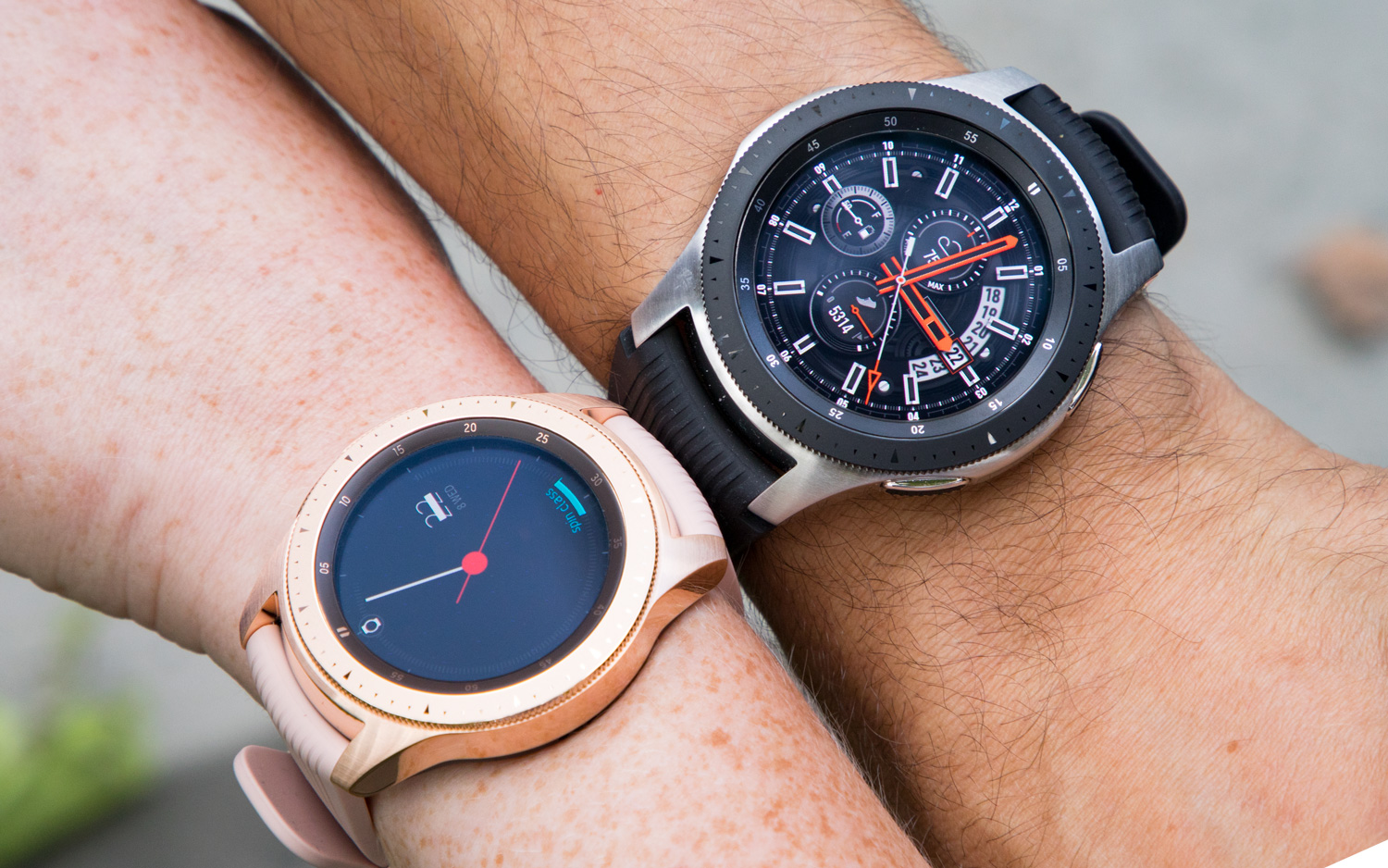
In addition to the home screen, which shows the date, time and battery level (depending on which watchface you use), there are screens for the weather, recent apps, health stats, calendar, contacts and more. Press and hold on any of these screens, and you can move them further up or back in the rotation.
The rotating bezel on the Galaxy Watch continues to be a defining feature. Spinning the dial is a great alternative to swiping or trying to poke at something with your finger. For example, you can swipe left or right to access different screens, or you can rotate the dial, which has a satisfying clicking mechanism.
Press and hold on the watch-face screen, and you can change its colors, design, complications and more.
I also like that you have granular control over notifications, apps and more. You can respond to notifications, such as text messages, in a variety of ways: dictating your answer, choosing one of multiple emojis, using a quick reply (such as Yes, OK or Talk to you later), typing out a response using an on-screen keyboard or using your finger to draw letters.
The Tizen OS is also speedy. With few exceptions, the watch responded instantly to my swipes, presses and taps. It doesn't hurt that the Galaxy Watch has a much newer processor than all Wear OS watches, which use a Qualcomm Snapdragon CPU that's 2 years old.
To be fair, Google has made some major improvements to Wear OS that should bring its functionality on a par with that of Tizen. And a new chip is also expected this fall that should speed newer watches up, including Google's own rumored Pixel Watch.
Samsung Galaxy Watch: Fitness features
The Galaxy Watch introduced automatic exercise-tracking for six workouts, including running and cycling. If you enable location detection (GPS and wireless networks) in the watch's settings menu, the watch is supposed to record your route. However, this didn't work for either of us over the course of several walks, runs and bike rides. Rather, the map view showed a general location of where we were, but the mileage recorded was pretty close.
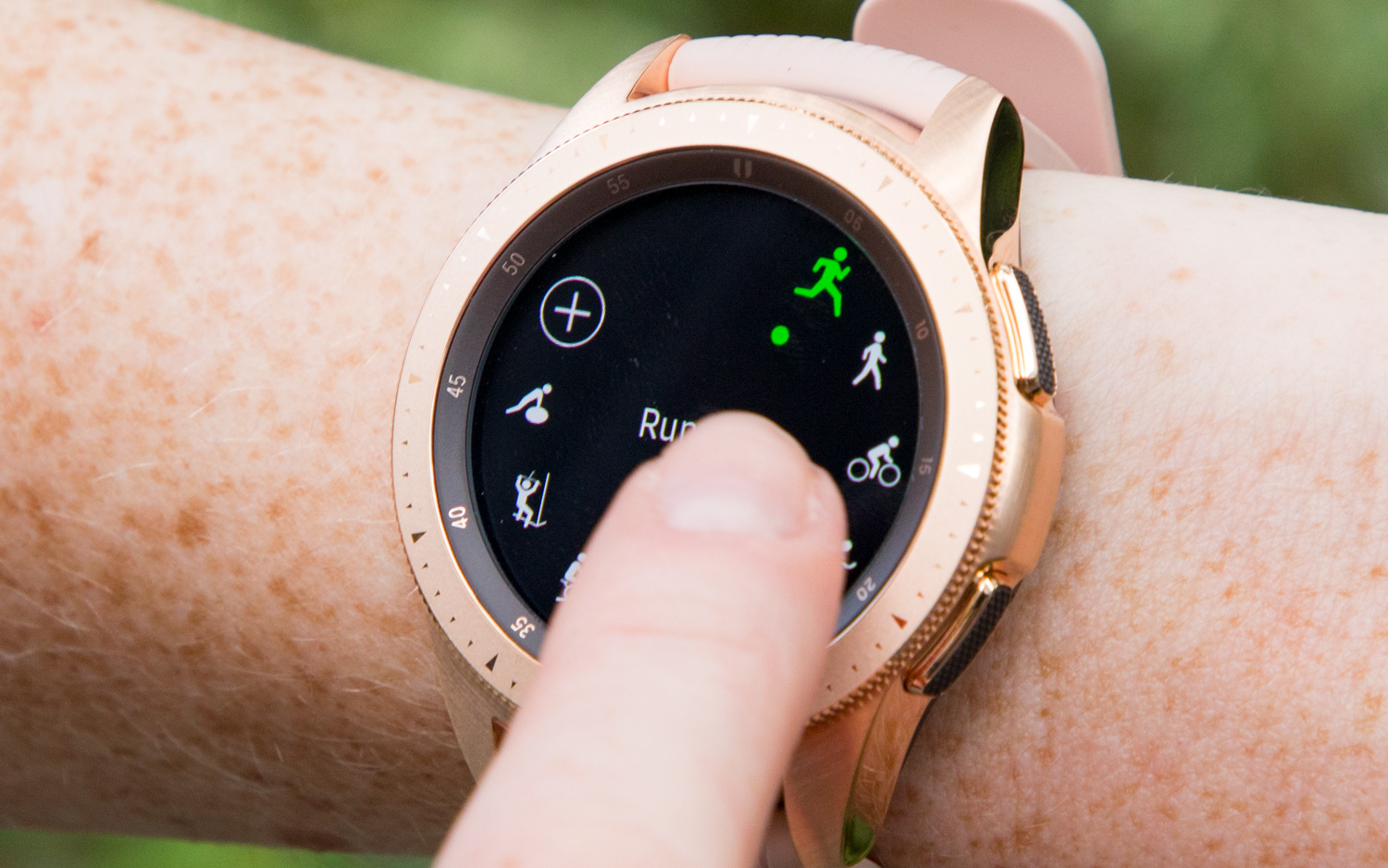
When we manually started a workout, the watch's GPS locked on within 30 seconds, whether we were in the city or in the suburbs, and it accurately tracked our movements. We also found that the watch was accurate when recording our heart rates, though it would occasionally fail to appear on the display.
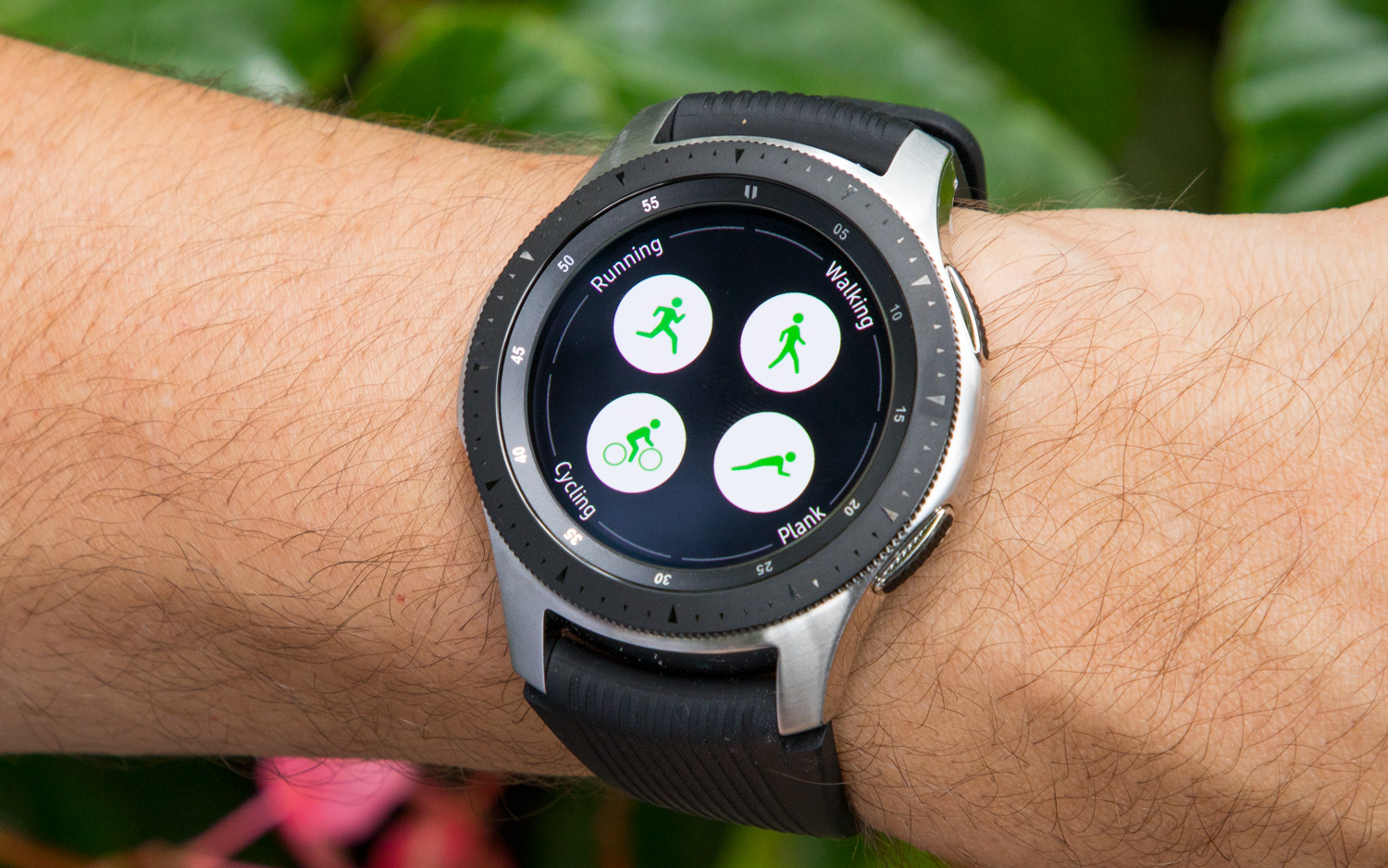
While there are a dearth of Tizen apps from bona fide companies, Under Armour has been one of the few that has made its apps — MapMyRun, UA Record, Calorie Counter and Endomondo — compatible with Tizen.
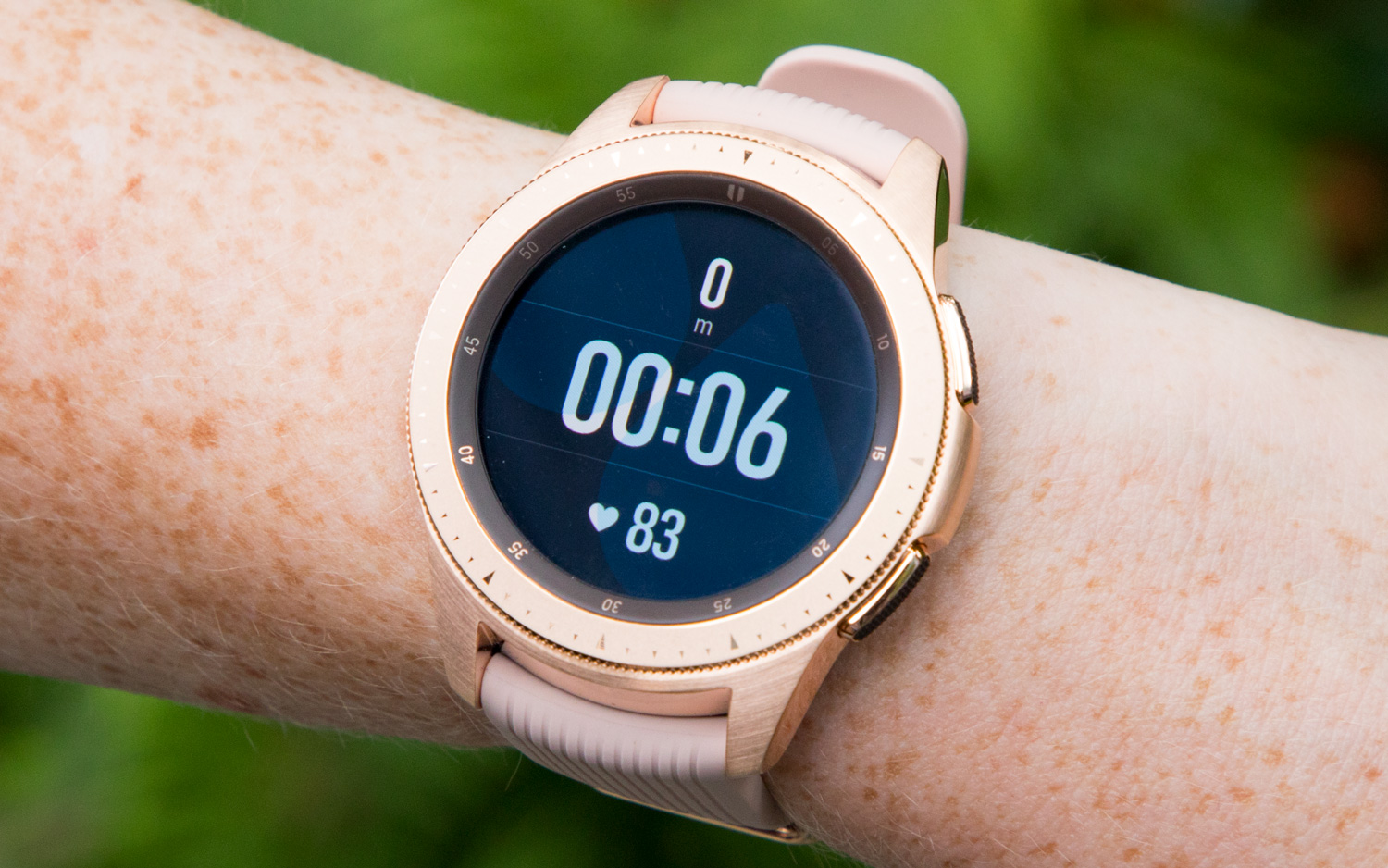
I've used the MapMyRun app on my phone and other devices for several years, and I like its implementation on the Galaxy Watch. The app lets you choose from among numerous activities and can be set to give vocal status updates at given distances or times.
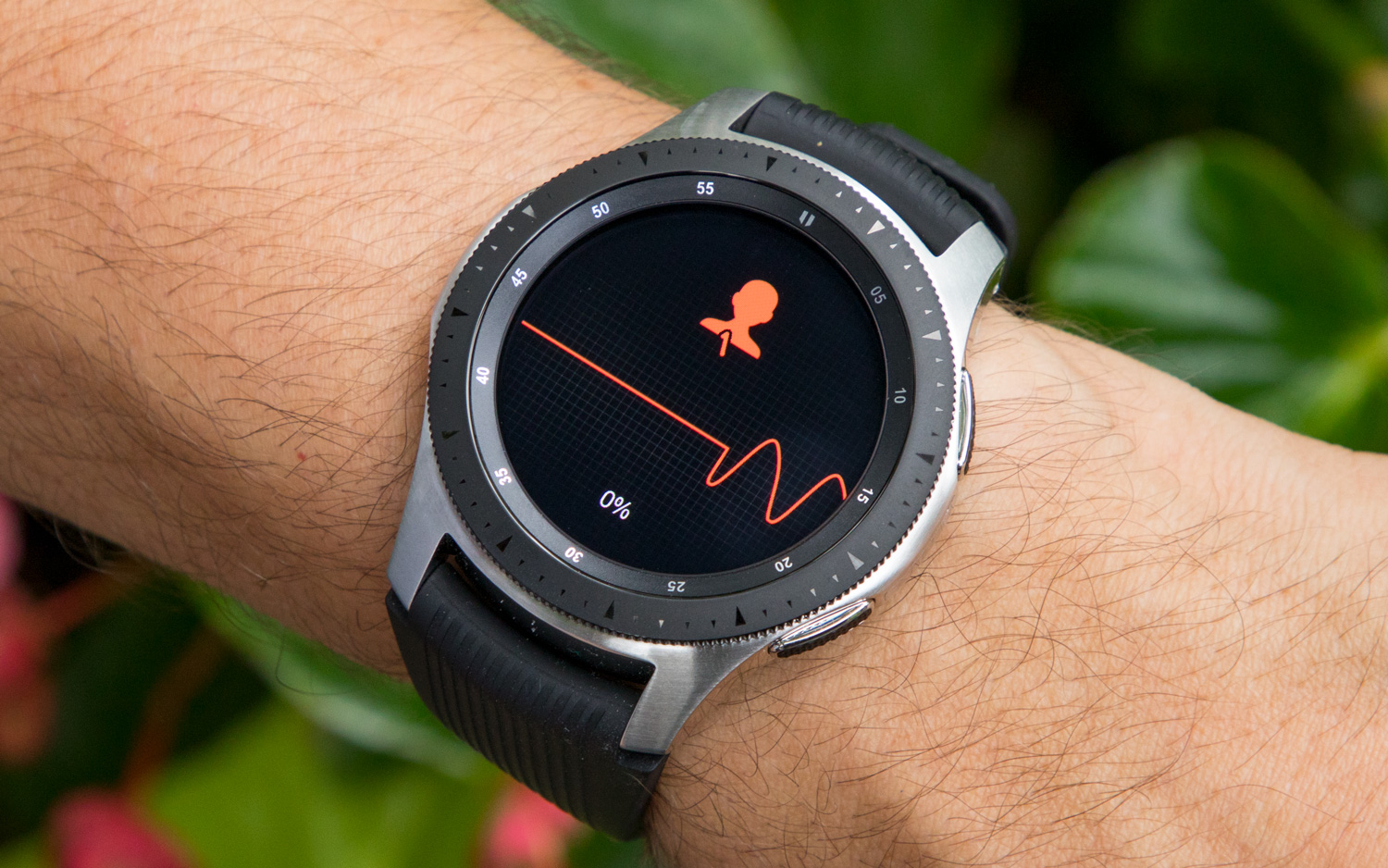
You can also customize, to a limited extent, what appears on each status screen (pace, time, heart rate), and you can swipe between various screens so that the data that's most important is what's most prominently displayed. That's a good thing, because the smaller data points are hard to read while you're running.
MORE: The Doctor on Your Wrist: How Smartwatches Are Saving Lives
I just wish you could change these screens before starting an exercise. One other nice touch: As your heart rate ramps up, the background color of the app changes, from blue to green to red.
Samsung Galaxy Watch: Battery and charging
Samsung claims that the LTE versions of its watches will go the distance; the 270-mAh battery in the 42mm model will last up to three days, while the 472-mAh battery in the 46mm model will last up to four.
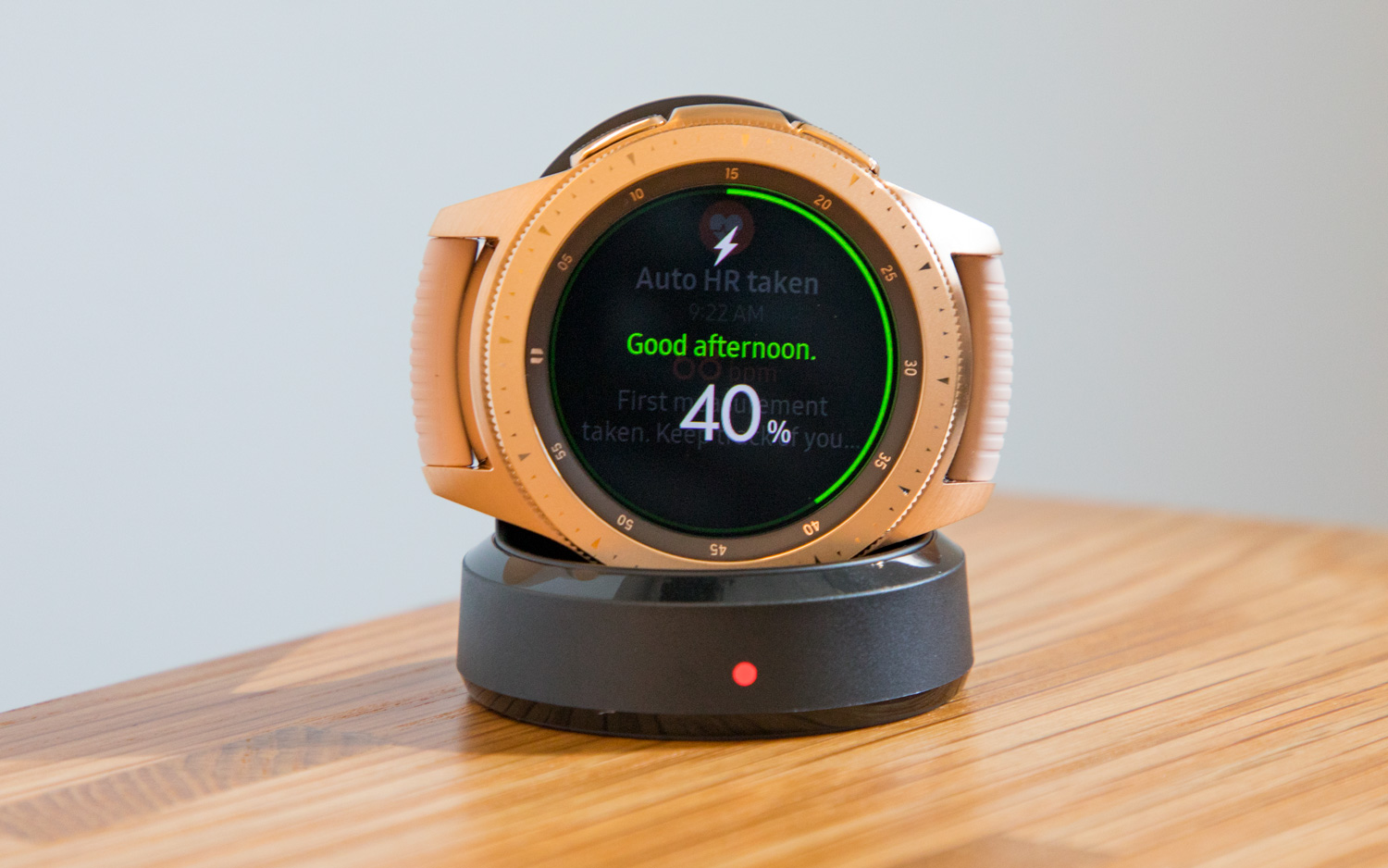
While we have only the Bluetooth models to test, their endurance seems to be roughly the same as the LTE versions. I used the 46mm model, and after charging it fully one night, I wore it for the next four days, receiving email notifications, checking my heart rate and using auto activity tracking, before the watch drained down to less than 20 percent.
Keep in mind, though, that using GPS for tracking your exercises will cause the battery to drain much faster. Thirty-minute runs using both GPS and the heart rate monitor dropped the battery charge by between 6 to 7 percent. We look forward to putting Samsung's LTE claims to the test.
MORE: Apple Watch vs. Samsung Galaxy Watch: Which Smartwatch Is Best?
Like Samsung's previous watches, the Galaxy Watch sits on its side in the included wireless charging dock. I like that the display automatically rotates 90 degrees, so you can use it as a mini-desk clock.
Samsung Galaxy Watch: iPhone compatibility
For the bulk of this review, I tested the Galaxy Watch paired with a Samsung Galaxy S8, but one of the "benefits" of Tizen is that it works with iOS devices, too. You can't say that about the Apple Watch.
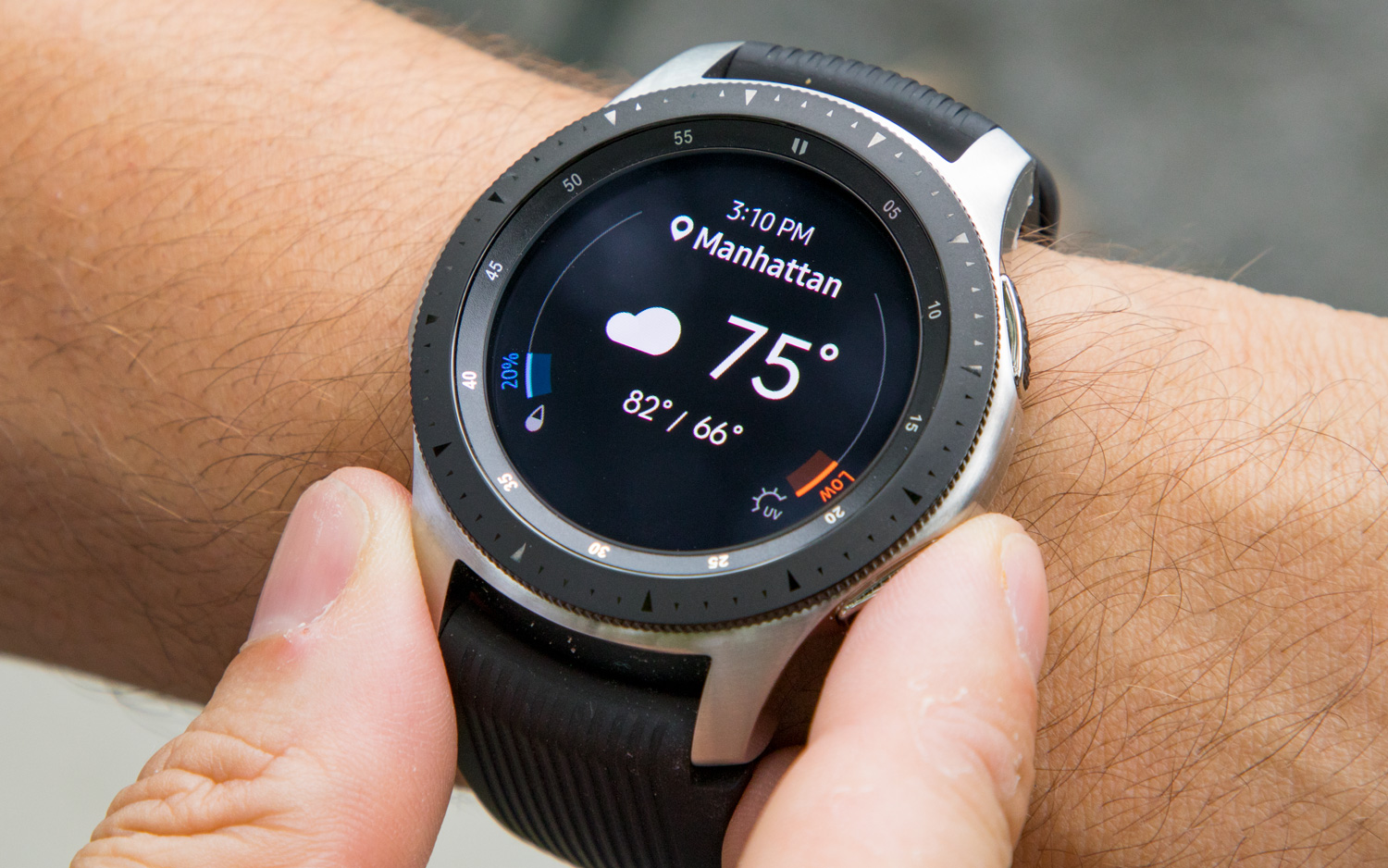
However, as with Wear OS, using Tizen with an iOS device is not a great experience. Interactions are much more limited. While you can view notifications from email, Facebook and more, you can't respond to them. You can respond to text messages, but not iMessages, and you can't initiate text messages, either. Nor can you send email.
It was more difficult to find apps, too; only those that are free will show up. And if you're looking to use Samsung Health, be aware that GPS is not supported.
Samsung Galaxy Watch: Apps
The one area where Tizen lags behind both Apple and Google is in apps. While Samsung says there are more than 70,000 Tizen apps, good luck finding anything from Google, Facebook, Twitter, Yelp, Instagram or many, many others. That really limits what you can do. For example, while you can receive and reply to notifications from these apps, such as Facebook Messenger or Twitter, you can't initiate a message to a contact in that app.
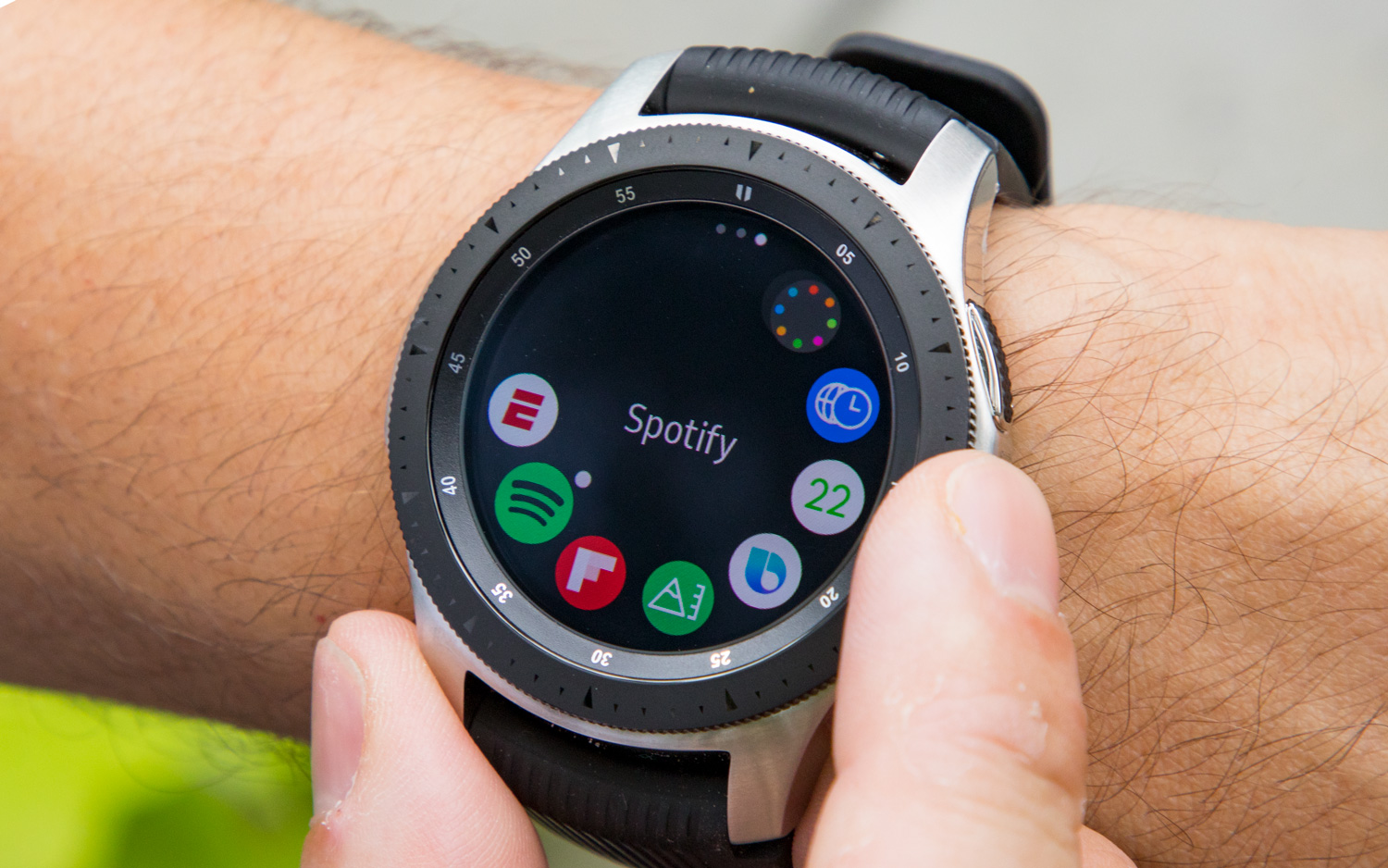
Good luck using Google Maps to find directions. Instead, you have to use the Here WeGo app; formerly a Nokia product, the maps look great and provide directions for driving, transit, walking and more. I liked that if I started directions on the WeGo app on the phone, they automatically appeared on the watch.
Still, for those Android users who are deeply invested into Google's ecosystem, it's a bit of a drawback to lack access to that company's apps.
There are scores upon scores of watch faces available, many of which cost anywhere from 99 cents to $2. You should be able to find enough free faces to satisfy your horological desires.
MORE: Smartwatch Buying Guide
Samsung Galaxy Watch: Bixby
Alexa, Google Assistant, Cortana, Siri, Bixby: Every company wants its own personal assistant, but not all of them have put in the work to make the program worth using.
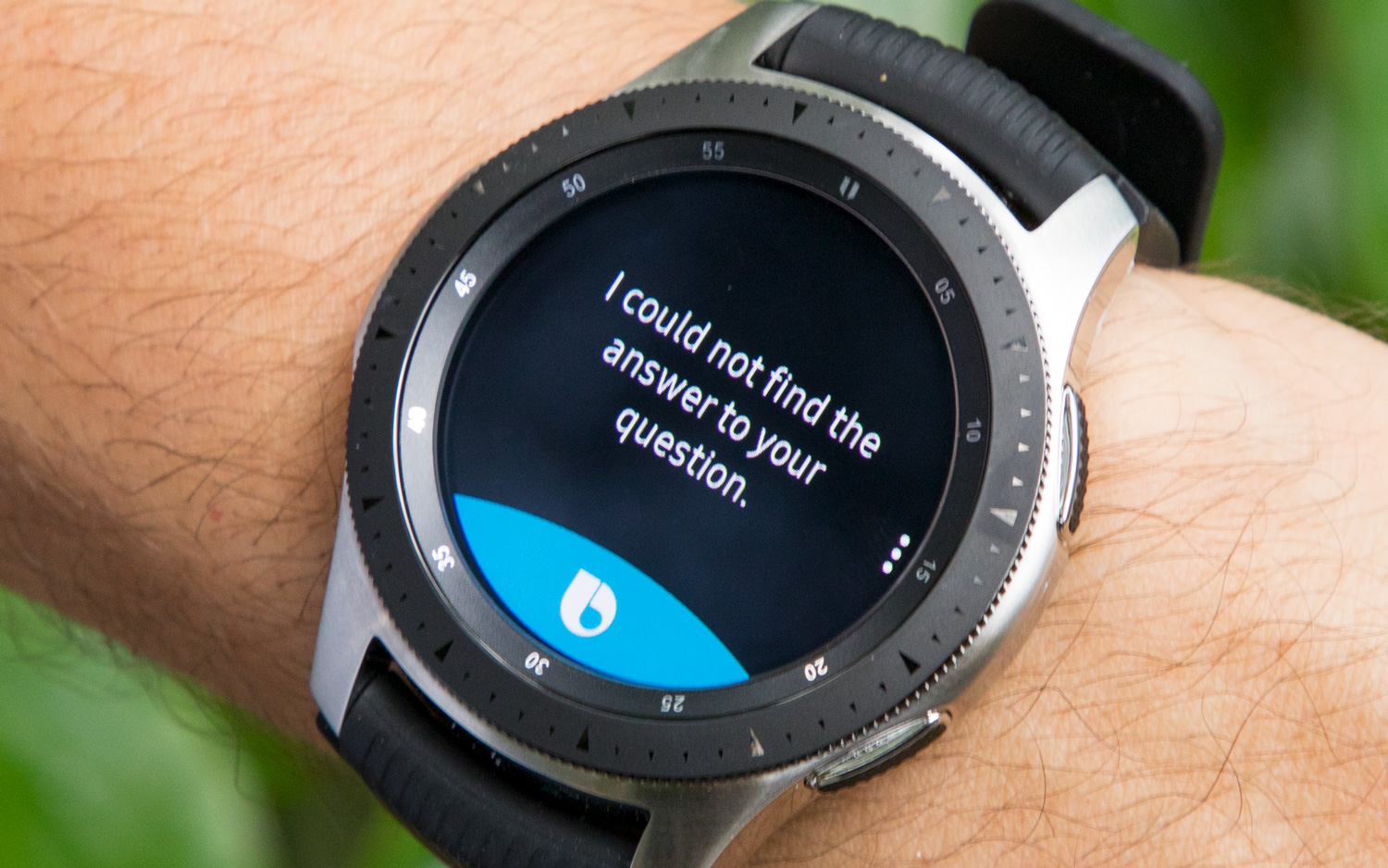
Bixby, Samsung's take on voice assistants, is probably the least functional of all. On the Galaxy Watch, Bixby did work well for some tasks, such as calling and texting contacts, looking up the weather, and starting workouts. However, it failed at other basic questions. "Do the Yankees play tonight?", "Get directions home," and "Turn off my floor lamp" all returned the same answer: "I could not find the answer to your question."
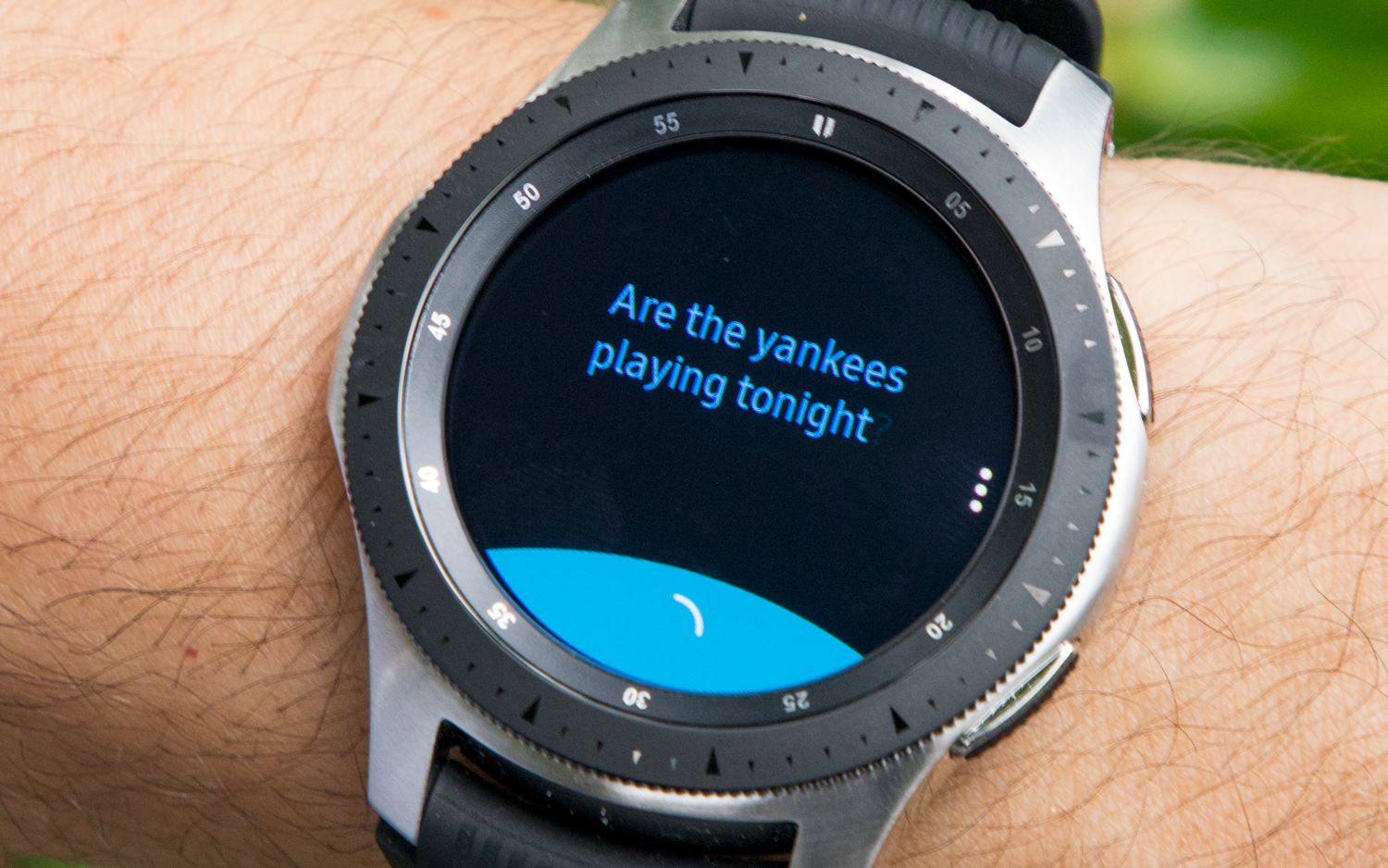
Bixby could get me directions to Yankee Stadium via the Here WeGo app, providing options for car, public transit, walking and biking; however, the watch's screen went blank as the watch was calculating everything, requiring me to reawaken it. Directions are suited for the watch's small screen: A large arrow dominates the display, telling you the direction of your next turn. Beneath that is the distance to the turn and the name of the street.
Samsung Galaxy Watch: Smart home integration
Synergy! Somewhat. Samsung is slowly working its SmartThings smart-home capabilities into the company's other products, from refrigerators to vacuums to routers. A SmartThings app for the Galaxy Watch also lets you control smart home devices from your wrist. I found the app a bit slow to load the status of all my smart home devices (of which there are dozens), but after that, I was able to turn lights off and on very quickly by pressing a button on the watch's display.
You can use the watch status as an automation condition, but with some limitations. You can set connected devices to change if the status of the watch indicates you're awake, sleeping, working out or not working out — so, if you're working out, you can have the lights turn on and have a smart speaker play music.
However, I wish you could create an automation based on the watch's location. So, for example, if you were going out for a run (and leaving your phone behind), SmartThings would automatically lock the door behind you and turn off the lights.
Samsung Galaxy Watch: Verdict
For its battery life alone, the Samsung Galaxy Watch is the best smartwatch for Android users. Being able to go four days without a recharge is reason enough to pick up this device. We also really like the Tizen interface, which is intuitive and easy to navigate, whether you're swiping across the screen or using the watch's handy rotating bezel.
Having onboard music storage — essential for those who want to travel light when working out — is also a key differentiator from smartwatches running Google's operating system. That said, there are far fewer apps for Tizen than there are for Wear OS, and Bixby is well behind Google Assistant.
iPhone owners should stick with the Apple Watch, as the integration is much more robust and seamless. But until Google (and others) come out with Wear OS watches that can go the distance with the Galaxy Watch, Samsung's wearable is the one to get.

Michael A. Prospero is the U.S. Editor-in-Chief for Tom’s Guide. He oversees all evergreen content and oversees the Homes, Smart Home, and Fitness/Wearables categories for the site. In his spare time, he also tests out the latest drones, electric scooters, and smart home gadgets, such as video doorbells. Before his tenure at Tom's Guide, he was the Reviews Editor for Laptop Magazine, a reporter at Fast Company, the Times of Trenton, and, many eons back, an intern at George magazine. He received his undergraduate degree from Boston College, where he worked on the campus newspaper The Heights, and then attended the Columbia University school of Journalism. When he’s not testing out the latest running watch, electric scooter, or skiing or training for a marathon, he’s probably using the latest sous vide machine, smoker, or pizza oven, to the delight — or chagrin — of his family.
-
brianloveskerri I am a LONG time WearOS user and fan but I will boldly say: Galaxy Watch is currently the best Smartwatch for Android. Period. And this is from someone who never wanted to give Tizen the time of the day.Reply
Some quick takes...
Initiating texts from messaging apps isn't a show stopper. Android Messages, Facebook Messenger, Allo, Skype all let me respond to messages in a multitude of ways.
I've gotten 3 solid days with sleep tracking on my 46mm model.
Notification's have been rock solid and I don't think I've missed a single one.
Health Tracking seems robust enough and there are lot of options and trackers.
The loss of third party integrations (connected apps) is coming to and end Sept. 1st, so that is something to consider if you need that.
Watch "Apps" don't matter much. I rarely used Google Maps, FB Messenger (which really didn't work), Nest, etc. on WearOS. Inherent apps, integrations and health options seem to work very on the GW.
I'm still hopeful WearOS does something big this fall and an amazing watch is to follow but it is hard to argue about how good the Galaxy Watch is.

